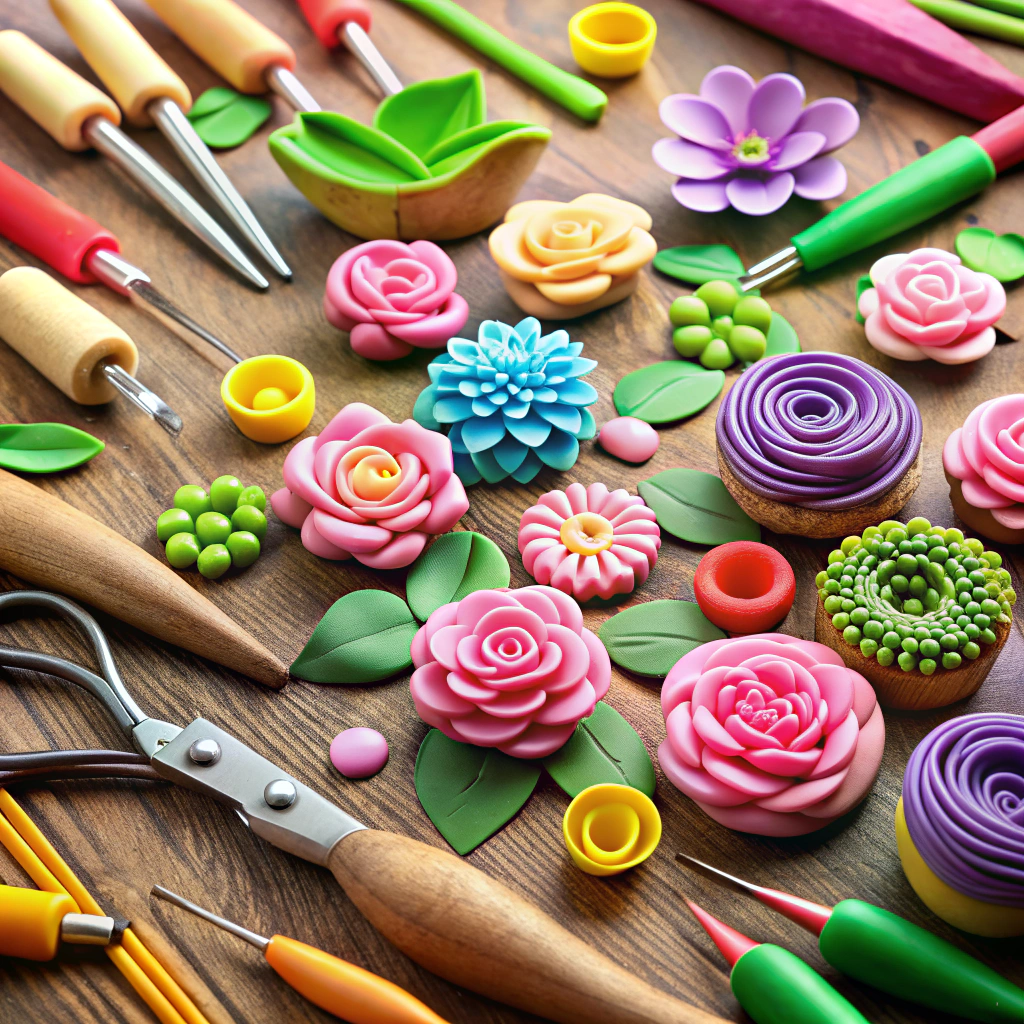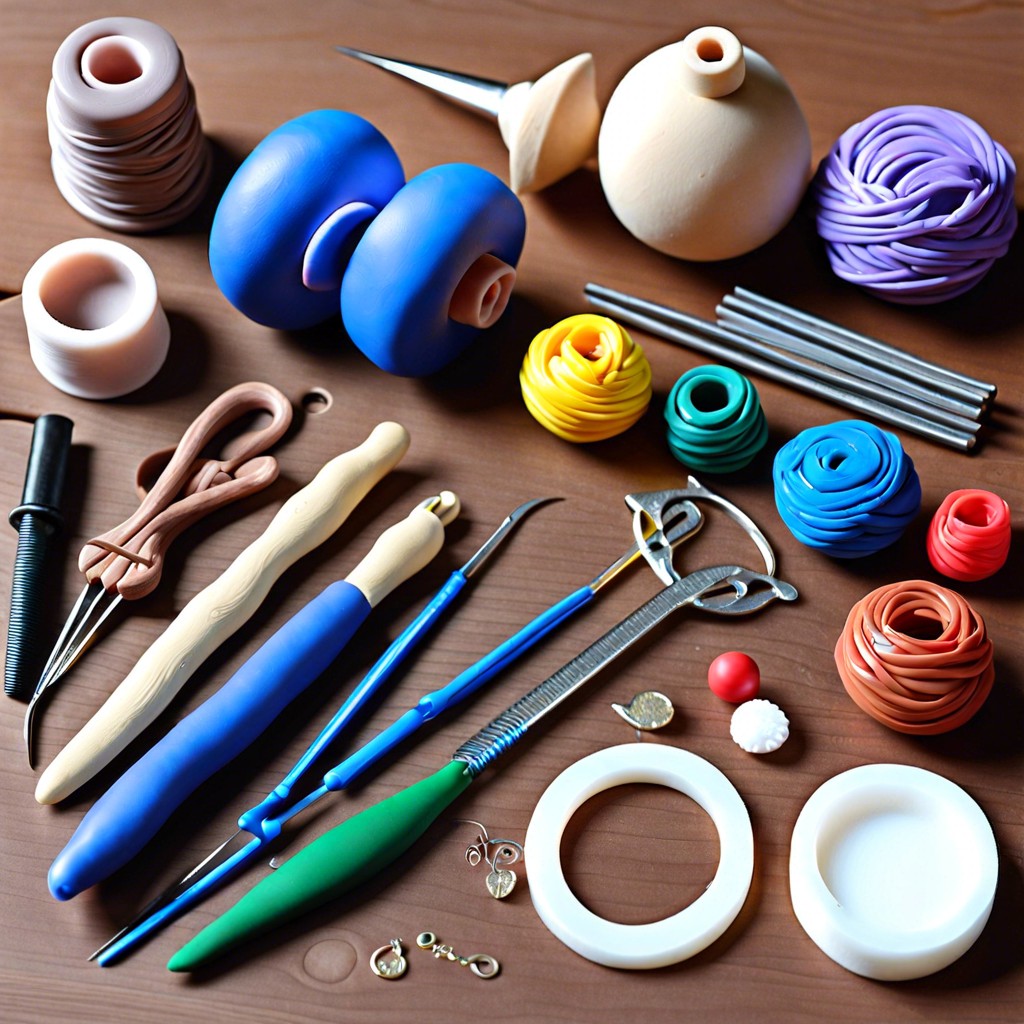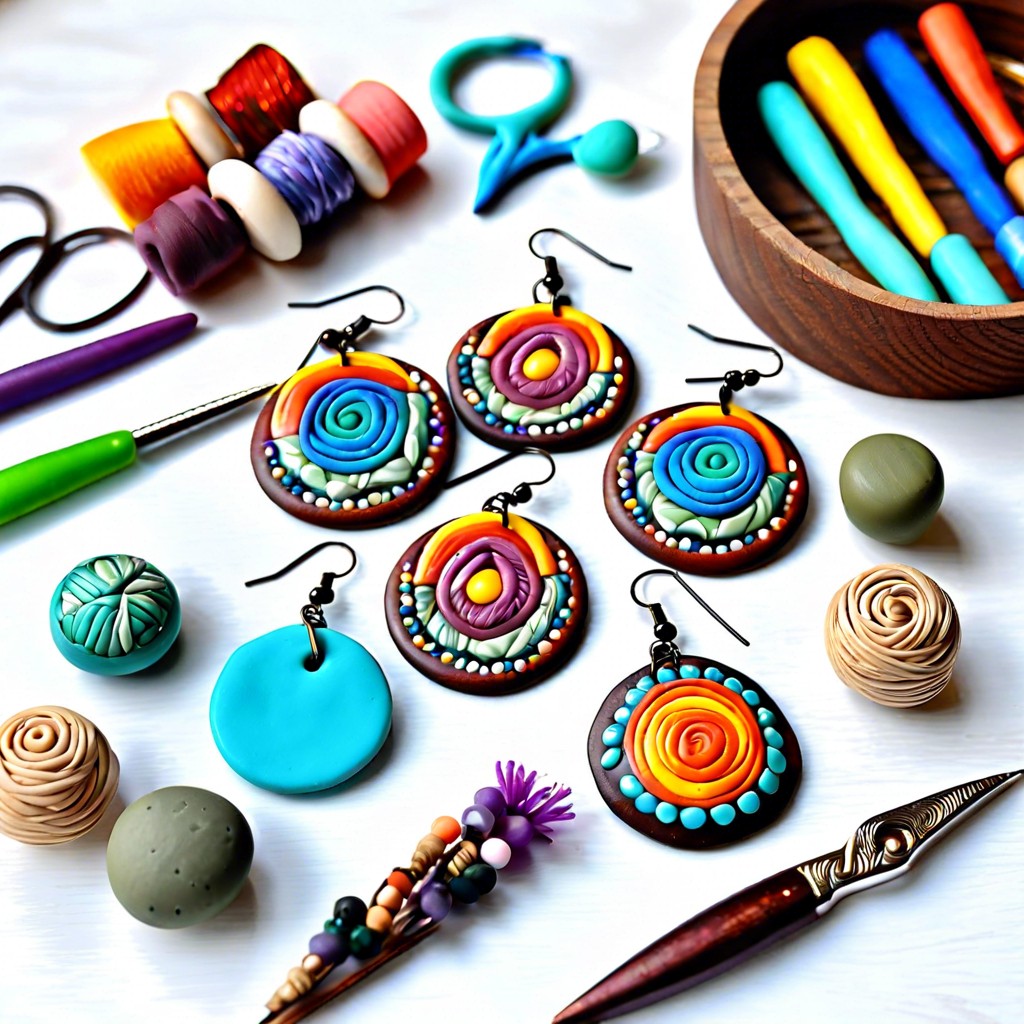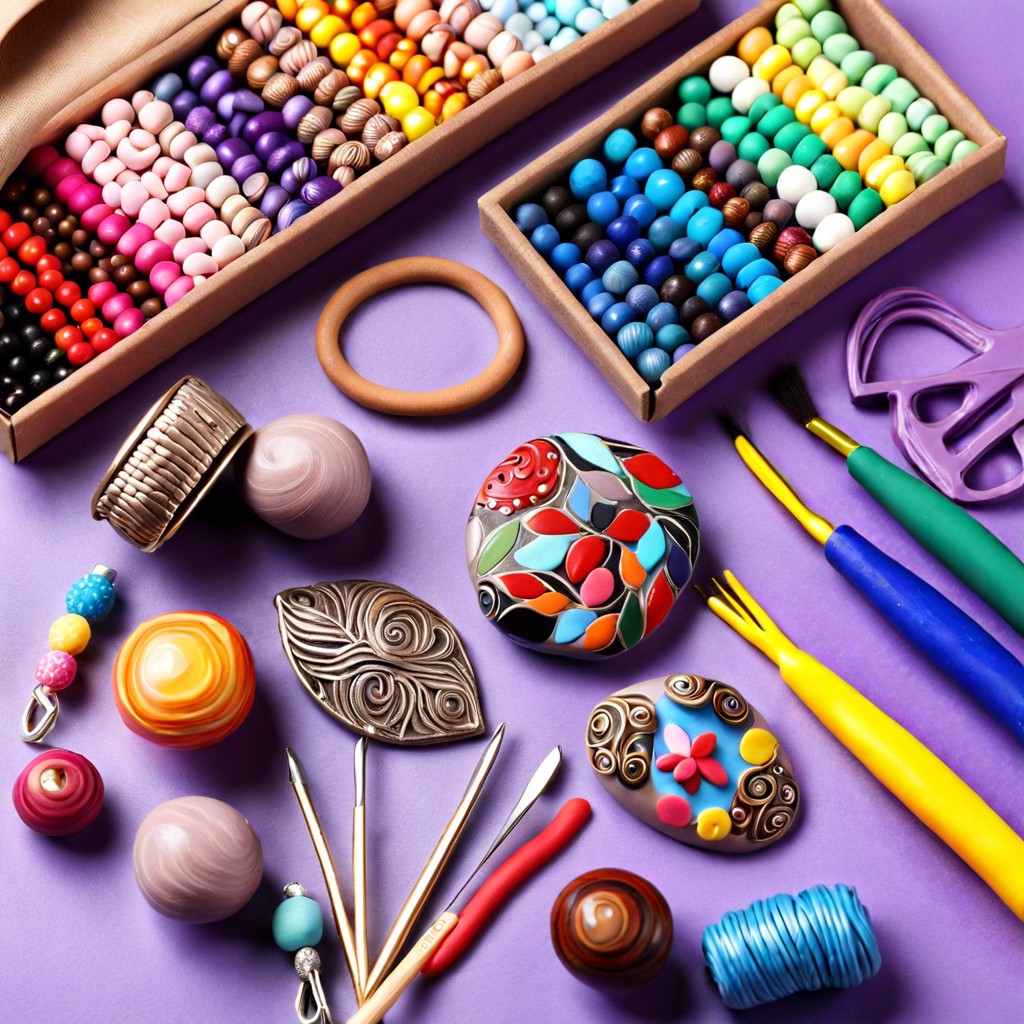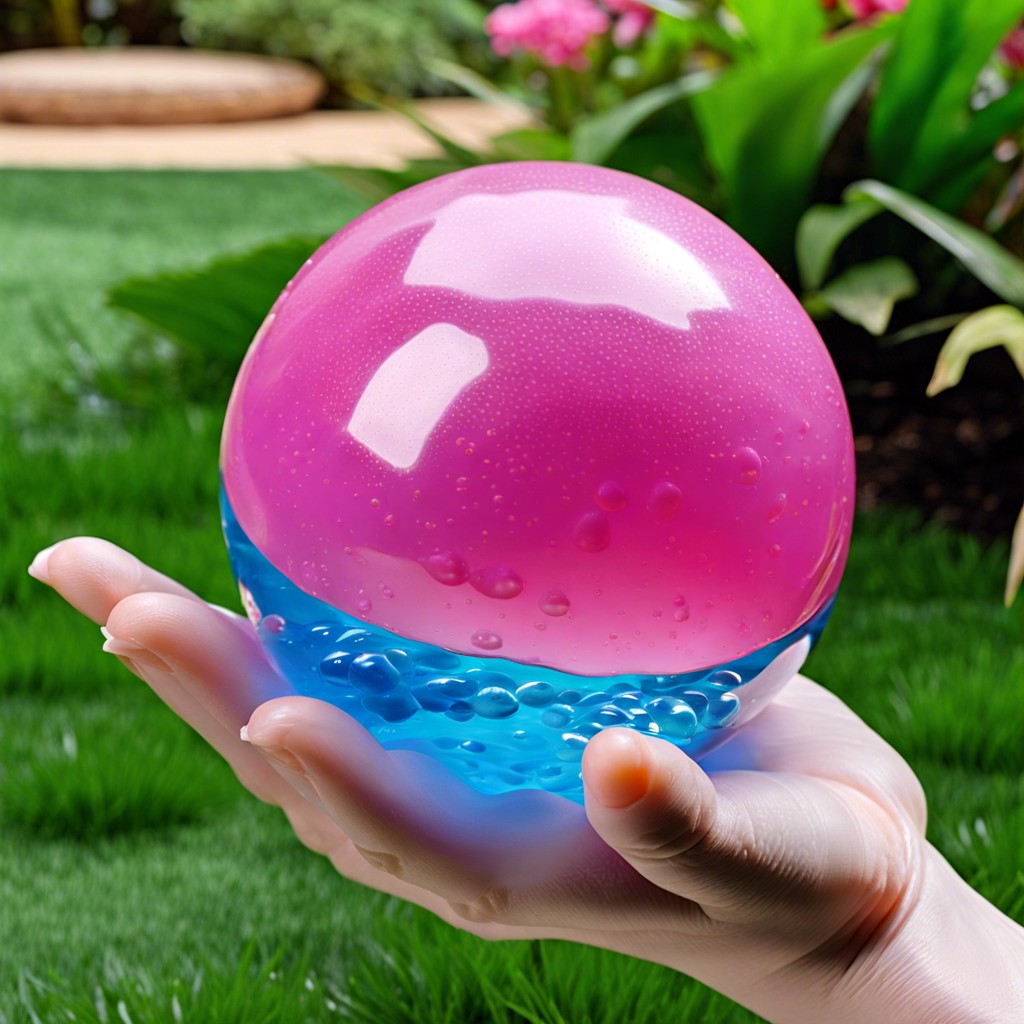In this article, you’ll learn about the versatility and applications of Hobby Lobby’s polymer clay for crafting and creative projects.
Key takeaways:
- Hobby Lobby Craft Polymer Clay is versatile and affordable.
- The clay is easy to handle and color mixing is a joy.
- It is suitable for caning and maintains crisp, clean edges.
- After baking, the clay is sturdy and can be embellished.
- While different from other brands, it’s all about personal preference.
What Is HL Craft Polymer Clay?
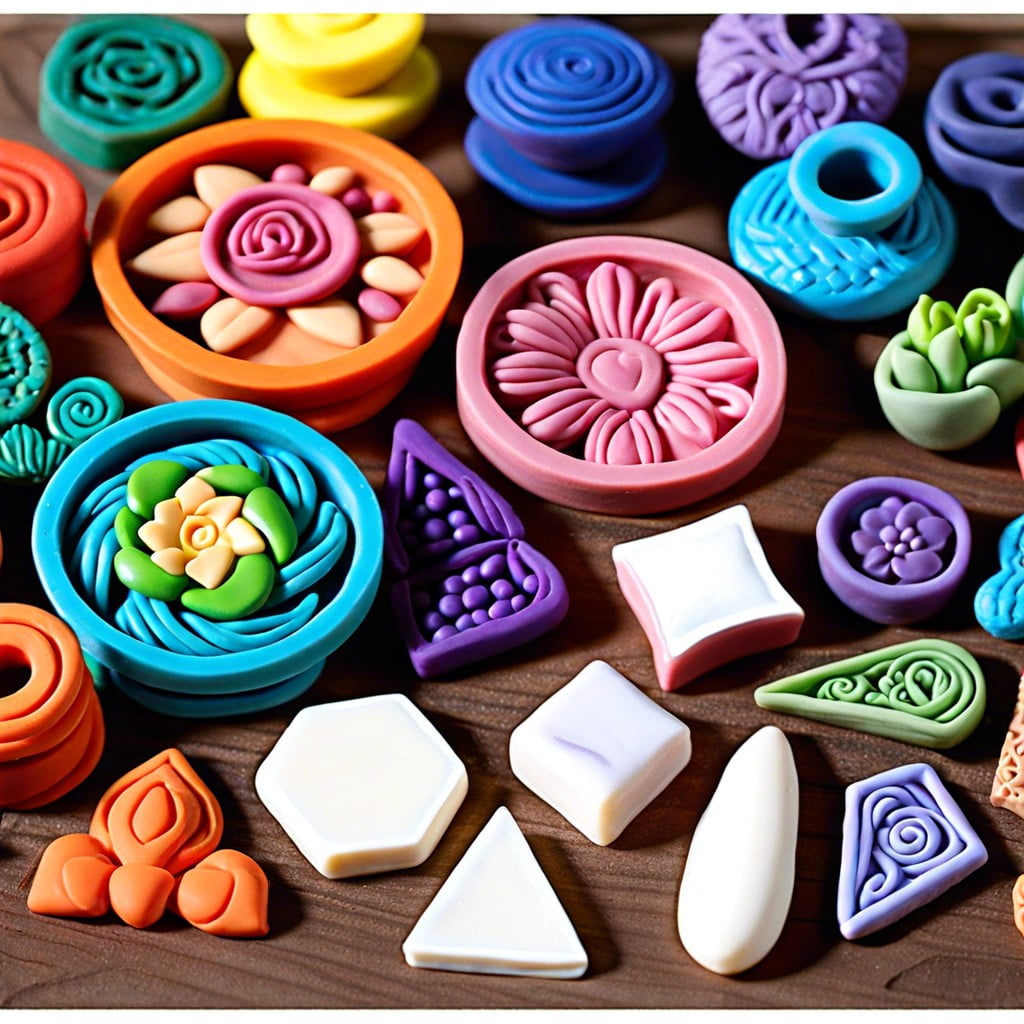
Hobby Lobby’s Craft Polymer Clay is like a magician’s putty, allowing craft enthusiasts to sculpt, mold, and shape their imaginative ideas into tangible art. Its easy-to-manipulate texture becomes solid upon baking, making it a hit for jewelry, figurines, or decorative items. Available in a spectrum of colors, it invites you to mix and match, creating custom hues for your projects. Oven-bake clay is also great for beginners, offering a forgiving medium that’s ready for trial, error, and eventual mastery. Plus, it’s affordable, making it a go-to for those testing the waters of polymer clay creations without diving into the deep end of their wallets.
Handling Crafter’s Collection Craft Polymer Clay
When you get your hands on Crafter’s Collection polymer clay from Hobby Lobby, you embark on a tactile adventure. This clay feels firmer than some other brands, which might surprise your fingertips at first. Give it a little kneading, though – it’s like coaxing a loaf of bread dough to rise. This initial working of the clay softens it, making it more pliable for your creative endeavors.
Temperature can play a role in how this clay behaves. Think of it like Goldilocks discovering her perfect porridge; too cold and the clay can be stubborn, too warm and it might get a tad sticky. Aim for that ‘just right’ zone, often achieved by simply holding the clay in your hands for a bit, letting your natural warmth do the trick.
Avoid the soap opera drama of fingerprints and dust by keeping your workspace clean. As if you’re a surgeon prepping for operation, a clean surface and tools help your clay stay pristine.
Color mixing with this clay is akin to mixing paint. Blend colors slowly to attain the shade of your dreams. A little can go a long way, and the joy is in the discovery of new hues.
Remember, slow and steady wins the race. Rushing can lead to cracks or plaques within your creations. Treat the clay with patience, like nurturing a plant, and watch your masterpiece come alive under your steady hands.
Can You Cane With Hobby Lobby Crafter’s Collection Craft Clay?
Absolutely, rolling and twisting hobbyists can breathe easy; Hobby Lobby’s polymer clay is indeed fit for caning. Picture this: you’re kneading away, prepping for that satisfying slice through your meticulously crafted design. The good news is, this clay’s consistency hits the sweet spot—not too sticky, not too brittle, making it a breeze to shape into complex patterns without losing that crisp, clean edge we all aim for.
Here’s a tip: Condition the clay well. A good warm-up helps the clay become more pliable, meaning those canes will come together like a dream. Give it a bit of elbow grease until it feels like Play-Doh from your childhood—pliable and ready for action.
Now, let’s talk slice-and-bake quality. The slice reveals the magic within, and with Hobby Lobby’s polymer clay, the colors stay true and vibrant, giving your canes that pop to make your projects stand out. Keep your blades thin and sharp, though—a dull edge can drag and distort your artistry.
One last pointer: patience, patience, patience. Take your time bending, twisting, and layering. Rushing leads to smudging the lines between colors, and we want sharp, not smudgy. Your end result will thank you for your care, showcasing those bold patterns in every slice.
HL Craft Clay After Baking
Once you’ve baked your HL craft clay project, you’ve reached the moment of truth. It’s going to show its final form and quality, like bread fresh out of the oven, but for crafters. Good news: this polymer clay is pretty forgiving, coming out of the heat wave with a sturdy personality. You can say that it “grows up” to be rather strong, able to withstand some rough and tumble without throwing a temper tantrum—no cracking or sulking here!
Keep in mind that while the clay’s surface might not be the shiniest kid on the block, you can buff it to a nice gleam or paint it to suit the fashion trends of your project design. The colors remain true to their pre-baked charm, mostly avoiding playing the chameleon when exposed to the heat. So, rest assured, your sunset orange will not turn into pumpkin pie—unless you want it to!
The versatility of this clay after baking truly shines when adding embellishments. It plays well with glues and varnishes, meaning you can jazz it up with some sparkle or a glossy coat if you fancy an extra pizzazz. Just remember, though, every oven is different, like snowflakes, so always keep an eye on baking times and temperatures to avoid any unwanted toastiness.
Is HL Craft Similar to Another Brand?
Jumping into comparisons, think of Hobby Lobby’s polymer clay as a distant cousin to the well-known brands like Sculpey or Fimo. They share a family resemblance—after all, they’re all polymer clays—but each has its own quirks and characteristics.
For starters, enthusiasts might find that while Hobby Lobby’s version softens with ease, making it a breeze to condition, it doesn’t always pack the same level of strength or durability after baking as its more established relatives. Consistency is another talking point; seasoned crafters can discern a slight difference in texture, with Hobby Lobby’s variety tending to be a tad stickier.
Color enthusiasts might observe that the pigment game isn’t as strong with HL craft clay. Whereas some brands boast a kaleidoscope of shades, Hobby Lobby’s selection might feel a bit limited. But hey, it’s nothing a little color mixing can’t fix!
Lastly, temperature tolerance is worth a mention. The baking instructions differ slightly between brands, so if you’re used to one, make sure to peek at the package directions to avoid any mishaps with your masterpiece.
Remember, while brand comparisons could go on till the cows come home, at the end of the day, your preference will likely hinge on what feels right in your hands and what gives life to your creative vision.
Recap
